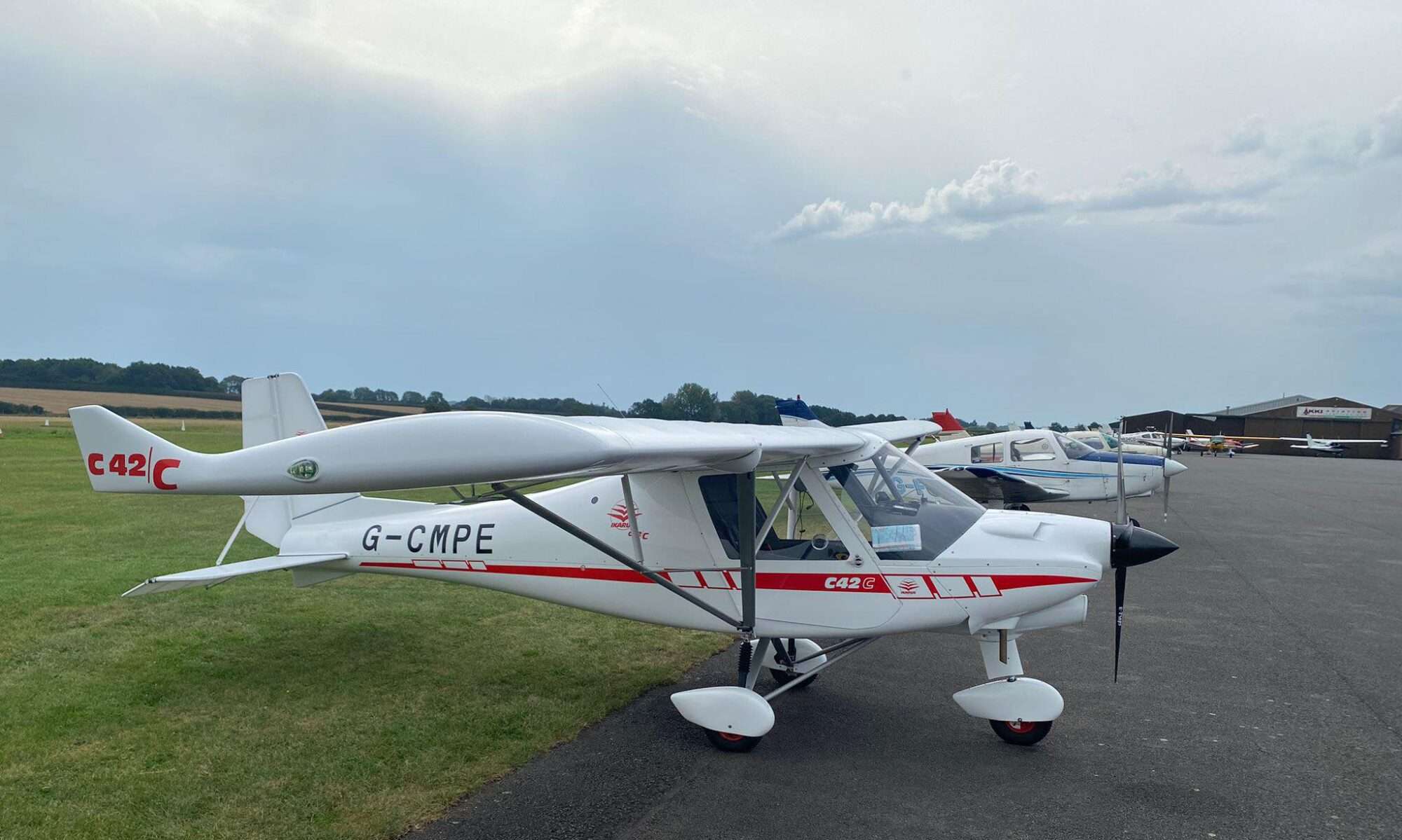
#1. What does this symbol mean?
#2. What commercial use may Microlight pilots undertake?
#3. Class E airspace is for both IFR and VFR flights but do you require a clearance to enter it?
Class E. Class E airspace is for IFR and VFR use. IFR aircraft require ATC clearance and compliance with ATC instructions is mandatory for separation purposes. VFR traffic does not require clearance to enter class E airspace.
#4. Your Certificate of Validity (CoV) for your Permit to Fly has expired. what do you need to do to resume flying?
Select all that apply:
#5. When flying over an assembly of how many people, do you need to be at least 1000ft above and able to glide clear?

#6. What does this symbol mean?
A white double cross signifies that glider flying is in progress. A larger version marks an area to be used only by gliders.
#7. How long must you keep your personal flying log for after your last flight?
#8. What is the minimum amount of third party insurance required for a microlight?
This is measured in Special Drawing or SDR Rights
An SDR (Special Drawing Right) is a currency unit of the International Monetary Fund and is used worldwide as a method of determining value. It is based on a selection of foreign currencies and therefore fluctuates in value on a continual basis in the same way as any currency does.
#9. When must you file a flight plan?
#10. How often is the UKAIP Updated?
#11. What is the minimum visibility in Class D airspace when flying VFR below 3,000ft?
#12. To display fly at an airshow you must have?

#13. What does this signal square image mean?
#14. Is an aircraft with a fixed radio required to have an Aircraft Radio Licence?

#15. What does the following mean if seen on a runway?
#16. To keep your NPPL valid you must fly?
#17. How high does an ATZ extend above QFE?
Aerodrome Traffic Zones (ATZ)
ATZ’s are established to give protection to aircraft at the critical stages of flight when departing, arriving and flying in the vicinity of an aerodrome.
Where the longest runway is greater than 1850 metres in length
The zone will normally extend from the surface to 2000 feet above ground level (agl) with a radius of 2.5 NM around the midpoint of the longest runway.
Where the longest runway is less than 1850 metres in length
The zone will normally extend from the surface to 2000 feet agl with a radius of 2.0 NM around the midpoint of the longest runway for aerodromes.
#18. Your NPPL rating is one day over its renewal period of 24 months, you have met the flying requirements, what must you do to continue flying legally?
#19. Which organisation regulates Microlights airworthiness within the UK?
The CAA regulates Microlights, however, some powers have been delegated to both the BMAA and the LAA.
#20. Can the time flown on your GST be counted towards you minimum required hours?
#21. How long are logged hours valid for NPPL students taking their GST?
#22. What are the operation limitations on an NPPL restricted license?
The minimum requirements before applying to the BMAA for your NPPL (M) restricted license are:
- Flight time under instruction – 15 hours in total, which has to include 7 hours solo
- You also need to hold a valid medical declaration / certificate in order to fly solo
The restricted licence means:
- The pilot must not fly more than 8nm from the departure airfield.
- The pilot must not fly when the cloud base is lower than 1000ft above ground level (AGL) and/or visibility is less than 10KM
#23. Which of the following excludes a pilot from making a Pilots Medical Declaration (PMD)?
However, a person with a physiological disorder that is controlled by medication may be certified as fit to fly by a CAA Aeromedical Examiner (AME)
#24. In order to carry an non pilot of type as a passenger you must have completed
#25. What is the minimum visibility in Class G airspace for a flight below 3000ft and travelling then 140kt?
For fixed wing aircraft operating at 140kt or less:
1500 m flight visibility
Clear of cloud
In sight of the surface.
Results
Well done you passed this NPPL air law quiz!
This quiz is brought to you free of charge, if you like it please consider visiting our sponsor’s by clicking one of the links or supporting us by exploring one of the ads.
Good attempt but a little more air law revision may be needed!
This quiz is brought to you free of charge, if you like it please consider visiting our sponsor’s by clicking one of the links or supporting us by exploring one of the ads.





